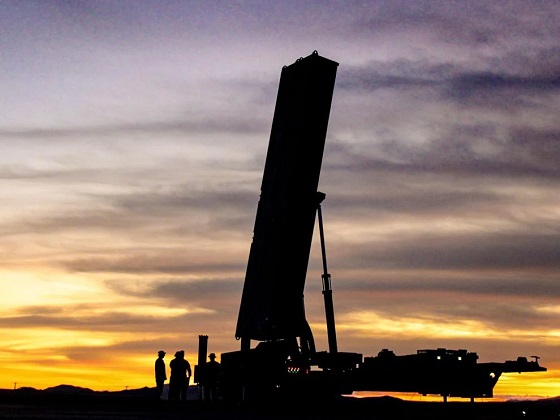Alberta
A Matter of Fact: Environment Minister Steven Guilbeault’s future view of Canada’s oil and gas sector is unrealistic

Canadian Minister of the Environment and Climate Change, Steven Guilbeault, speaks at the China pavilion during the United Nations Conference of the Parties (COP15) in Montreal, Quebec, on December 14, 2022. Getty Images photo
From the Canadian Energy Centre Ltd.
Canada could play a key role in lowering global emissions by unlocking our LNG industry and helping Asian countries replace coal
Federal Environment and Climate Change Minister Steven Guilbeault is continuing to plot a painful course toward a short-sighted phase out of Canada’s world class oil and gas sector based on an unrealistic view of world’s future energy mix.
In an interview with Euractiv, Guilbeault said he supports the phase out of unabated fossil fuels, those without the technology to minimize emissions, by 2050 to align with the International Energy Agency’s Net Zero Scenario, a path that is largely out of touch with the current global reality.
Based on that increasingly unlikely scenario, the minister said he anticipates Canada’s oil and gas sector will follow suit with a 50% to 75% reduction in the production of oil and gas by 2050, which would be devastating for our economy, hurt our economic allies, and make little to no progress towards reducing global emissions.
Here are the facts.
Fact: The IEA’s Net Zero Scenario is largely aspirational, not practical
Guilbeault’s vision of a massive global reduction of fossil fuel usage is growing even less likely amid a lingering energy crisis prompted by several years of declining investment in oil and gas followed by Russia’s invasion of Ukraine.
The fact is, this year the world will use more oil and more coal than any time in human history.
According to the IEA’s latest short-term outlook, global oil use will hit a record high of 102 million barrels per day this year and is expected to grow to 106 million barrels per day by 2028. Last week, OPEC forecasted that by 2045, global oil demand will reach 110 million barrels per day.
Meanwhile, demand for natural gas, particularly liquefied natural gas (LNG) is soaring.
By 2040, global LNG demand – driven primarily by growing Asian economies – is expected to reach 700 million tonnes, a more than 75 per cent increase from 2022. Demand for LNG is expected to outpace supply by the middle of this decade.
Relying on the IEA’s Net Zero scenario, Guilbeault said he believes oil use will decline to between 25-30 million barrels per day, a 75 per cent reduction. Rapid deployment of renewables, he said, would fill that void despite some significant hurdles that could hinder a sweeping transition.
The bottom line is pretty clear. In the IEA’s most likely scenario, oil and gas will still account for 47 per cent of the global energy mix in 2050, a reduction of 5 per cent from 2021. While the share of renewables will more than double, it is still expected only to account for 29 per cent of the world’s energy mix in 2050.
Fact: A rapid phase out of oil and gas would hurt Canada and its allies
Canada’s oil and gas sector is a critical part of our economy, supporting hundreds of thousands of jobs from coast-to-coast, including thousands of jobsin manufacturing, environmental, and financial services tied to the industry, especially in Ontario and Quebec.
A recent analysis by commodity data firm S&P Global focused specifically on the oil sands suggests that efforts to meet federal emissions targets for 2030 would likely force the industry to slash production by up to 1.3 million barrels per day.
According to the analysis, that could result in the elimination of between 5,400 and 9,500 jobs. With just over 54,000 oil and gas extraction jobs in Canada, that would mean the elimination of as much as 17% of the workforce.
In addition to jobs, the industry is also an economic bulwark, generating $168 billion in GDP in 2021, about 7.2 per cent of Canada’s economic activity. Oil and gas also accounted for nearly a third of Canada’s exports in 2021, injecting $140 billon into the economy.
Amid the ongoing global energy crisis, some of Canada’s international allies have turned to Canada to be a potential key supplier as they look for stable and responsible suppliers to replace Russian oil and gas.
The leaders of Germany and Japan made direct appeals to Canada to supply more LNG to help meet their energy needs.
Yamanouchi Kanji, Japan’s ambassador to Canada, made it clear that some of our Asian allies see Canada as a key player in the world’s future energy, particularly when it comes to LNG.
“The world is waiting for Canada,” he said earlier this year. “Canada can and should play a very important role to support the energy situation not only in Japan and South Korea, but the world.”
Fact: Reducing global emissions starts with Canadian natural gas
If Canada is truly serious about tackling global greenhouse gas emissions, we could make a much bigger impact by supplying energy-hungry Asian countries with some of the cleanest LNG on the planet to replace coal.
Climate change is a global issue, not a local one.
Despite being one of the world’s largest energy producers, Canada is still only responsible for about 1.6 per cent of total global emissions.
Developing Asian counties, particularly China, have turned to coal to help power their growing economies. A switch to natural gas to generate power reduces emissions by 50 per cent on average, according to the IEA. Canadian natural gas shipped as LNG could perform even better, reducing emissions from coal by about 65 per cent, according to Energy for a Secure Future.
With analysts expecting world LNG demand to double over the next two decades, Canada could make a real measurable impact on lowering global emissions by unlocking its LNG potential.
A recent study by Wood Mackenzie found that Canadian LNG exports could reduce net emissions in Asia by 188 million tonnes per year through 2050. Put another way, that would be the annual equivalent of removing the emissions of all vehicles on Canadian roads, or wiping out nearly three time’s B.C.’s total emissions.
Meanwhile, a coalition of six companies representing 95 per cent of Canada’s oil sand production have jointly committed to achieve net zero emissions by 2050. The Pathways Alliance is looking to harness emerging technology like carbon capture and storage as well as small modular nuclear reactors to reach that target.
The reality is that if Canada significantly curtails its oil and gas industry, other national producers, some of which lack Canada’s commitment to democratic ideals and the environment, will fill that void. This could see bad actors like Russia continue to maintain a strategic and economic advantage over Europe by maintaining European reliance on its energy.
Fact: Phasing out oil and gas would hurt Indigenous communities
Over the last decade, Indigenous communities have emerged as key players in Canada’s energy sector, allowing First Nations in many cases to create intergenerational opportunity for their people.
From pipelines to LNG terminals, dozens of Indigenous communities have entered into ownership agreements on major oil and gas projects.
In B.C., 16 First Nations will acquire a 10 per cent stake in the Coastal GasLink pipeline once it’s completed later this year. In Alberta, another 23 First Nation and and Métis communities are now approximately 12 per cent owners of seven operating Enbridge oil sands pipelines, the largest Indigenous energy transaction ever in North America.
And in northwest B.C., the Haisla Nation is 50 per cent owner of the proposed Cedar LNG project, which would be the first Indigenous-owned LNG terminal in the world.
“When Europeans, Asians and Americans think of Canada’s Indigenous peoples, they often think we oppose all energy development. We aren’t victims of development. Increasingly we are partners and even owners in major projects,” Haisla Nation Chief Councillor Crystal Smith said during an April press conference after leading a delegation of Indigenous leaders to meet key international diplomats.
Indigenous employment in Canada’s oil and gas sector has continued to grow, rising by more than 20 per cent since 2014 to reach an estimated 10,400 jobs in 2020.
Indigenous-owned businesses also benefit from the industry, with three major projects – the Trans Mountain Expansion, Coastal GasLink, and LNG Canada – spending some $9 billion with Indigenous- and locally-owned businesses.
Alberta
Low oil prices could have big consequences for Alberta’s finances

From the Fraser Institute
By Tegan Hill
Amid the tariff war, the price of West Texas Intermediate oil—a common benchmark—recently dropped below US$60 per barrel. Given every $1 drop in oil prices is an estimated $750 million hit to provincial revenues, if oil prices remain low for long, there could be big implications for Alberta’s budget.
The Smith government already projects a $5.2 billion budget deficit in 2025/26 with continued deficits over the following two years. This year’s deficit is based on oil prices averaging US$68.00 per barrel. While the budget does include a $4 billion “contingency” for unforeseen events, given the economic and fiscal impact of Trump’s tariffs, it could quickly be eaten up.
Budget deficits come with costs for Albertans, who will already pay a projected $600 each in provincial government debt interest in 2025/26. That’s money that could have gone towards health care and education, or even tax relief.
Unfortunately, this is all part of the resource revenue rollercoaster that’s are all too familiar to Albertans.
Resource revenue (including oil and gas royalties) is inherently volatile. In the last 10 years alone, it has been as high as $25.2 billion in 2022/23 and as low as $2.8 billion in 2015/16. The provincial government typically enjoys budget surpluses—and increases government spending—when oil prices and resource revenue is relatively high, but is thrown into deficits when resource revenues inevitably fall.
Fortunately, the Smith government can mitigate this volatility.
The key is limiting the level of resource revenue included in the budget to a set stable amount. Any resource revenue above that stable amount is automatically saved in a rainy-day fund to be withdrawn to maintain that stable amount in the budget during years of relatively low resource revenue. The logic is simple: save during the good times so you can weather the storm during bad times.
Indeed, if the Smith government had created a rainy-day account in 2023, for example, it could have already built up a sizeable fund to help stabilize the budget when resource revenue declines. While the Smith government has deposited some money in the Heritage Fund in recent years, it has not created a dedicated rainy-day account or introduced a similar mechanism to help stabilize provincial finances.
Limiting the amount of resource revenue in the budget, particularly during times of relatively high resource revenue, also tempers demand for higher spending, which is only fiscally sustainable with permanently high resource revenues. In other words, if the government creates a rainy-day account, spending would become more closely align with stable ongoing levels of revenue.
And it’s not too late. To end the boom-bust cycle and finally help stabilize provincial finances, the Smith government should create a rainy-day account.
Alberta
Governments in Alberta should spur homebuilding amid population explosion

From the Fraser Institute
By Tegan Hill and Austin Thompson
In 2024, construction started on 47,827 housing units—the most since 48,336 units in 2007 when population growth was less than half of what it was in 2024.
Alberta has long been viewed as an oasis in Canada’s overheated housing market—a refuge for Canadians priced out of high-cost centres such as Vancouver and Toronto. But the oasis is starting to dry up. House prices and rents in the province have spiked by about one-third since the start of the pandemic. According to a recent Maru poll, more than 70 per cent of Calgarians and Edmontonians doubt they will ever be able to afford a home in their city. Which raises the question: how much longer can this go on?
Alberta’s housing affordability problem reflects a simple reality—not enough homes have been built to accommodate the province’s growing population. The result? More Albertans competing for the same homes and rental units, pushing prices higher.
Population growth has always been volatile in Alberta, but the recent surge, fuelled by record levels of immigration, is unprecedented. Alberta has set new population growth records every year since 2022, culminating in the largest-ever increase of 186,704 new residents in 2024—nearly 70 per cent more than the largest pre-pandemic increase in 2013.
Homebuilding has increased, but not enough to keep pace with the rise in population. In 2024, construction started on 47,827 housing units—the most since 48,336 units in 2007 when population growth was less than half of what it was in 2024.
Moreover, from 1972 to 2019, Alberta added 2.1 new residents (on average) for every housing unit started compared to 3.9 new residents for every housing unit started in 2024. Put differently, today nearly twice as many new residents are potentially competing for each new home compared to historical norms.
While Alberta attracts more Canadians from other provinces than any other province, federal immigration and residency policies drive Alberta’s population growth. So while the provincial government has little control over its population growth, provincial and municipal governments can affect the pace of homebuilding.
For example, recent provincial amendments to the city charters in Calgary and Edmonton have helped standardize building codes, which should minimize cost and complexity for builders who operate across different jurisdictions. Municipal zoning reforms in Calgary, Edmonton and Red Deer have made it easier to build higher-density housing, and Lethbridge and Medicine Hat may soon follow suit. These changes should make it easier and faster to build homes, helping Alberta maintain some of the least restrictive building rules and quickest approval timelines in Canada.
There is, however, room for improvement. Policymakers at both the provincial and municipal level should streamline rules for building, reduce regulatory uncertainty and development costs, and shorten timelines for permit approvals. Calgary, for instance, imposes fees on developers to fund a wide array of public infrastructure—including roads, sewers, libraries, even buses—while Edmonton currently only imposes fees to fund the construction of new firehalls.
It’s difficult to say how long Alberta’s housing affordability woes will endure, but the situation is unlikely to improve unless homebuilding increases, spurred by government policies that facilitate more development.
-

 C2C Journal2 days ago
C2C Journal2 days ago“Freedom of Expression Should Win Every Time”: In Conversation with Freedom Convoy Trial Lawyer Lawrence Greenspon
-

 2025 Federal Election1 day ago
2025 Federal Election1 day agoColumnist warns Carney Liberals will consider a home equity tax on primary residences
-

 Opinion2 days ago
Opinion2 days agoCanadians Must Turn Out in Historic Numbers—Following Taiwan’s Example to Defeat PRC Election Interference
-

 International1 day ago
International1 day agoJeffrey Epstein accuser Virginia Giuffre reportedly dies by suicide
-

 2025 Federal Election1 day ago
2025 Federal Election1 day agoNine Dead After SUV Plows Into Vancouver Festival Crowd, Raising Election-Eve Concerns Over Public Safety
-

 2025 Federal Election1 day ago
2025 Federal Election1 day agoMark Carney: Our Number-One Alberta Separatist
-

 2025 Federal Election20 hours ago
2025 Federal Election20 hours agoCanada is squandering the greatest oil opportunity on Earth
-

 International17 hours ago
International17 hours agoU.S. Army names new long-range hypersonic weapon ‘Dark Eagle’








